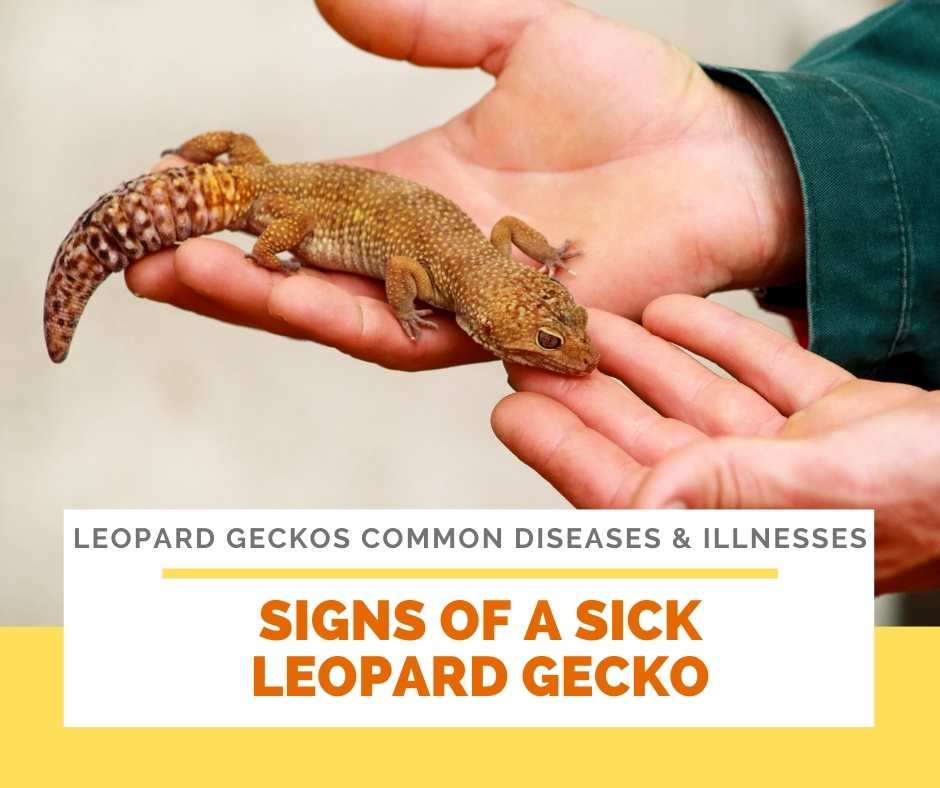How to know in advance if your leopard gecko is sick and about to die? When it comes to reptiles, leopard geckos are among the hardest. Leopard gecko death indicators might include but are not limited to your pet behaving strangely, losing weight rapidly, or seeming sluggish. Infected leopard geckos frequently don’t display any symptoms until the disease has advanced substantially due to their poor metabolism.
As a pet parent, you have a responsibility to educate yourself about the health and behavior of your leos. Keep a watch on your gecko to see if there are any indications of illness before it’s too late. If you have a leopard gecko, you will learn about the many death indicators and how to care for your pet.
Table of Contents
Indications That Your Leopard Gecko Is not well
Even though leopard gecko fans may find this issue unpleasant, it is nevertheless essential for us to be aware of these warning flags. Our leopard geckos would appreciate it if we could simplify their procedure in this manner. We may even be able to avert their death in certain circumstances if we notice the early warning symptoms. So, fear not, there is yet some glimmer of hope!
Leopard gecko Weight Loss To The Maximum
Leopard geckos need to feed regularly since they have a quick metabolism. Leopard geckos have a unique ability to retain food and water in their tails, making them fascinating. These stockpiles allow them to maintain their nutrition even when there is a scarce food supply. This explains why their tails seem to be fat. Your leopard gecko’s tail is the most apparent symptom of weight loss at this point. “stuck tail” or “sick tail” refers to this.
A leopard gecko with a very slender tail is very harmful since it signifies that they lack sufficient fat deposits from which to get food. A variety of factors might contribute to rapid weight reduction.
Leopard gecko Unusual or Non-Depositing
Checking your Leo’s feces is one of the easiest ways to tell whether they’re dying or unwell. Impaction may be a possibility if they produce atypical or fewer droppings. In leopard geckos, impaction is a frequent cause of unexpected death. If your leopard gecko ingests anything that causes digestive and other internal problems, your pet may get ill.
The sooner you notice that your gecko is infected, the better your chances of resolving the issue. But if you fail to discover it early enough, it may lead to death. Your gecko may be suffering from impaction if they are producing fewer droppings.
Leopard gecko Sunken Eyes
Leopard geckos are beloved for their beautiful eyes, one of their most endearing characteristics. Their eyes are there to entice even the most jaded of souls. It’s simple to see when someone has sunken eyes since the difference is apparent.
When this occurs, it’s usually due to dehydration. Their habitat may be arid, or they may not have easy access to water, or they may have been misted incorrectly. Many people don’t realize that this also occurs before the onset of a significant sickness. That’s correct, of course! To keep track of your leopard gecko’s health, you need to inspect its eyes more regularly than you think.
In several leopard gecko forums, many owners have experienced this strange occurrence. The first indicator of an imminent disease is sunken eyes, and their leopard geckos will become sick soon after (if they do not immediately go to the clinic).
So many people have had the same experiences. By looking at them, it has become standard practice to tell if leopard geckos are unwell. This, however, should not be confused with a leopard gecko’s regular melancholy expression.
Early identification of illness is considerably aided by familiarity with your leopard gecko and the healthful foods it enjoys. Some leopard gecko ailments may not lead to abrupt death, but if they are not properly treated, some diseases may. The preceding list of leopard gecko sickness symptoms should be helpful to you.
how to know in advance if your leopard gecko is sick and about to die – I hope you have got all the details.
